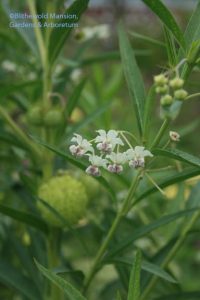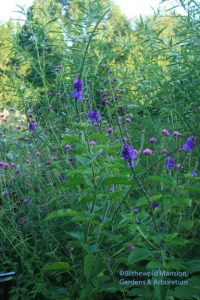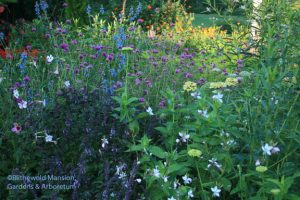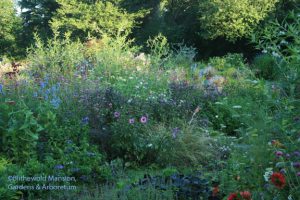Purple haze
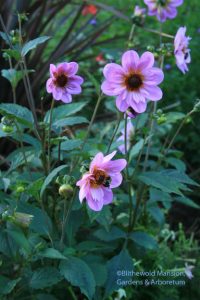 Back in June when we planted the lavender/purple experiment in the Display Garden, I said that I would talk more about it. Since it’s officially full grown, nearly past full bloom and it’s Garden Bloggers Bloom Day (hosted by Carol of May Dreams Gardens), I figure it’s high time, now or never. First, I want to state for the record that I love the bed. It’s like a calm hush and easy-breezy on the eyes. But I also think it’s not entirely successful.
Back in June when we planted the lavender/purple experiment in the Display Garden, I said that I would talk more about it. Since it’s officially full grown, nearly past full bloom and it’s Garden Bloggers Bloom Day (hosted by Carol of May Dreams Gardens), I figure it’s high time, now or never. First, I want to state for the record that I love the bed. It’s like a calm hush and easy-breezy on the eyes. But I also think it’s not entirely successful.
Purple is a difficult color. I knew that going in. Not only is it nearly impossible to photograph accurately (anyone have any pointers?) but it has a tendency to disappear a little in the landscape. It’s just not very assertive – that is, unless it’s paired with yellow and then – Watch Out! Perhaps here I should interject a little color theory vaguely remembered from art school: Red and Blue are both primary colors that combined, make purple. Purple is exactly opposite to yellow (the other primary color) on the color wheel. Red is considered a hot color that appears, to our eyes, to advance while blue is a cool receder. Mix the two and you’ve got luke warm, staying put – just like green (blue + yellow) which we all know as a calm, steady ever-presence. No two purples are quite the same either – some are pinker, some are bluer and the pinkers clash with the pinker stills and the bluers dissolve into the background. It’s tough, I’m telling you. 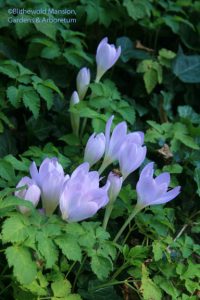
Purple, the color of kings and bishops, is said to be a rare color in nature – though we gardeners know the truth. Gail and I chose plants like our faves African blue basil which has deep blue-ish-purple leaf backs and veins and paler purple flowers; Stachytarpheta jamaicensis which is as true a straight purple as you’ll ever see; Verbena bonariensis because it chose us and we couldn’t have edited it from the garden if we wanted to (we’ve wanted to); Gomphocarpus physocarpus (a.k.a Asclepias physocarpa ‘Oscar’ or ‘Hairy Balls’) which has just the barest tinge of purple-ish on the almost insignificant flowers, and heliotrope. We also tried a dahlia called ‘Teesbrooke Redeye’, a 4′ tall gomphrena called ‘Fireworks’, petunias, spoon shaped African daisies (Osteospermum), Brazilia button flower (Centranthemum) and a couple of other basils. — The dahlia and gomphrena are pinker rather than purpler but we love them anyway. Against and in the midst of all of that we threw in a few other colors, like green, orange and blue (I couldn’t do yellow) just to observe the relationships.
The main problem I have with the bed is that it has no snap-crackle. Not only are the colors fairly quiet but the foliage is Gail’s and my signature delicate – we’re always on the lookout for more foliage contrast and end up finding the extremes – like Gunnera. (That would have been overkill a little.) And most of the flowers in that bed are diminutive too, giving the whole thing a sort of wispy, frothy look. But when it comes right down to it, I don’t mind because now we know a lot more than we did about purple – and about our own predilections. That bed will look very different next year…
How do you feel about the color purple?

